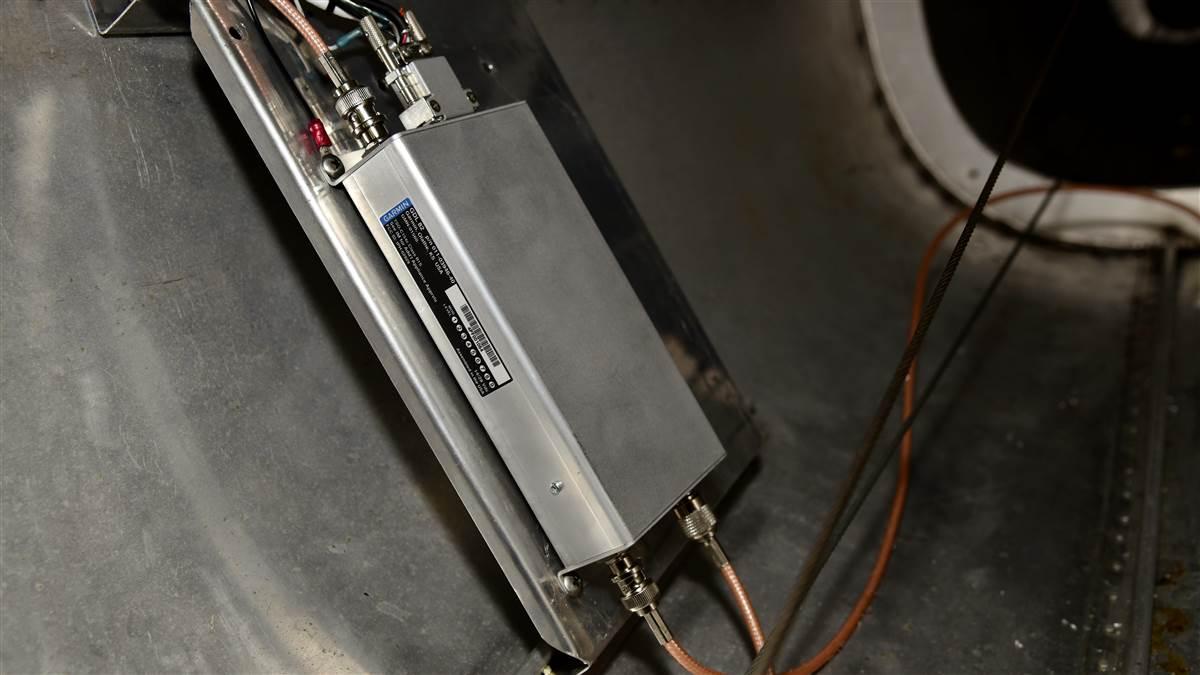ADS-B: Economy class
Meet the lowest-cost certified ADS-B Out solutions

This month, we’ll summarize the current lower-cost solutions for certificated aircraft. There still are some, and the list undoubtedly has changed since you last looked at it. Notably, NavWorx—which offered a low-cost universal access transceiver (UAT) providing both ADS-B Out and In—closed its doors after an airworthiness directive could not be successfully resolved, and Garmin released a new Out-only UAT that features streamlined installation when compared to similar products.
 ADS-B uses GPS satellites instead of ground-based radar to determine aircraft location and is a key technology behind the FAA’s Next Generation Air Transportation System. The FAA will require ADS-B Out capability for flights after January 1, 2020, in airspace where a transponder is required today. ADS-B In—which provides the ability to display weather, notams, and other data on cockpit displays or wirelessly on a tablet—is optional.
ADS-B uses GPS satellites instead of ground-based radar to determine aircraft location and is a key technology behind the FAA’s Next Generation Air Transportation System. The FAA will require ADS-B Out capability for flights after January 1, 2020, in airspace where a transponder is required today. ADS-B In—which provides the ability to display weather, notams, and other data on cockpit displays or wirelessly on a tablet—is optional.
As of March 1, one year and 10 months before the mandate takes effect, 51,882 U.S. aircraft had equipped with ADS-B Out. Of that total, 37,941 are certificated fixed-wing general aviation aircraft. There are about 155,000 GA aircraft flying with Mode C transponders in the United States, but it’s unclear how many must equip with ADS-B by January 2020.
Three products currently rate as best buys for certified aircraft compliance (Experimental and Light Sport have the option of equipping with noncertified products that meet the performance requirements of the ADS-B Out rule). Two are 1090-MHz Mode S Extended Squitter transponders that incorporate ADS-B Out. The Appareo Stratus ESG and Garmin GTX 335 each list for $2,995, including a built-in WAAS GPS position source that meets the rule requirements. (You may be able to save a few dollars, on both the transponder cost and installation, by skipping the internal position source if you already have a compliant WAAS GPS navigator that can fill that role.)
The third is Garmin’s GDL 82, announced in July 2017; it received FAA certification in late December. Like the transponders above, this small, lightweight UAT includes a built-in GPS receiver to serve as the ADS-B position source; it is designed to be installed between the aircraft’s transponder and transponder antenna. The ADS-B data is broadcast through the transponder antenna, so a separate UAT antenna is not required. It lists for $1,795, including a WAAS GPS antenna and installation kit. The installation is minimally intrusive and does not require any panel modifications.
Although the GDL 82 does not require a control head, two options would require minor panel additions. There’s an optional failure annunciator that lights to indicate a failure of the unit. The GDL 82 may continue to transmit ADS-B Out data, depending on the nature of the failure, but the message will not comply with ADS-B rules.
There’s also an optional anonymous mode switch, which causes the UAT to transmit a temporary address instead of the aircraft’s assigned ICAO 24-bit address—and “VFR” instead of the aircraft’s registration number—when the associated Mode A/C transponder is squawking the VFR 1200 code. This ADS-B option is only available to capable 978-MHz UATs when the aircraft is operating VFR and not receiving radar services. Garmin recommends that the anonymous mode not be enabled in flight, to avoid receiving an ownship shadow if you have optional ADS-B In capabilities; instead, activate it on the ground before takeoff.
The GDL 82 requires no pilot action during normal operation. It is powered on with the avionics and will automatically begin to operate when the aircraft’s Mode A/C transponder is set to ALT and a GPS position source is available. With ADS-B Out, the transponder should be operated in the ALT mode during all airport surface operations—erroneous data may be broadcast if the transponder is switched from Standby to ALT just before takeoff.
Sparkchasers Aircraft Services in Smithfield, North Carolina, has installed several GDL 82s. “When it’s done right, it’s bulletproof,” said Mark Huddleston, general manager and a co-founder of the business. “It works so well” with a digital Mode C transponder like the Garmin GTX 327, he added. (The GDL 82 cannot be used with a Mode S transponder.)
The only mistake an aircraft owner can make is installing a GDL 82 with an elderly transponder that’s reached the end of its service life, he said. “How many shops will even fix a King KT-76A, or a [Narco] AT150 or AT150A, or a Cessna transponder?”
An operating transponder still is required after the ADS-B Out mandate becomes effective in January 2020, so if your transponder has become unreliable—or unsupportable—Huddleston recommends a new 1090ES transponder to meet the ADS-B Out mandate. Why? Even though a new Garmin GTX 335 or Appareo Stratus ESG lists for $1,200 more than the GDL 82, the installation in many cases will cost less for the transponder upgrade. Sparkchasers mounts a lot of the GDL 82s in the back of the airplane, and power and ground wires have to be run to it, he explained. If the owner wants the optional failure annunciator or anonymous mode switch, panel modifications and additional wiring are required.
The installation cost for either the GDL 82 or a new transponder is going to vary. “It depends on the airplane,” he said. “Every airplane is different—even airplanes 100 serial numbers apart.”
And there are other good reasons for considering the transponder option, Huddleston said. “I think you’ll have more bang for the buck—and you’re under warranty.” There’s a lot to be said for that, especially if you’ve been paying each year to keep an old analog transponder serviceable.
Email [email protected]



